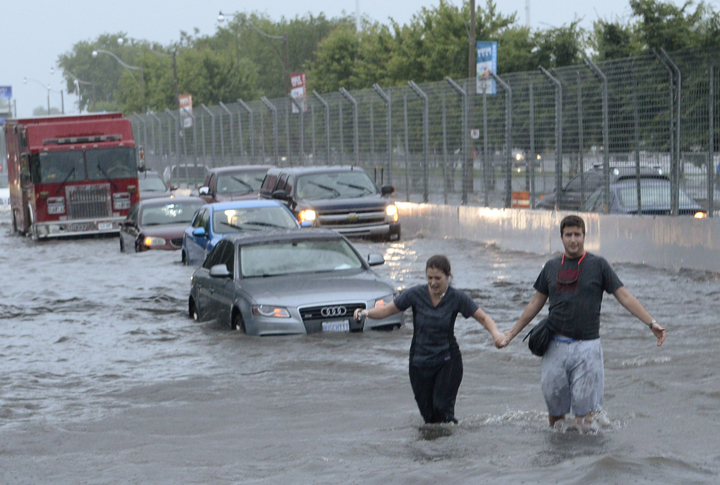You see it every time there’s a heavy rainfall: torrents of water running down streets, large lake-like “puddles” pooling in the middle of roads, flooding streets. Sometimes it doesn’t even take that much rain to produce these things.

The reason we see these each time we get a storm is due to the concrete jungle.
Typically, when rain falls, most of it is absorbed into the ground. During heavy rains, some water won’t be absorbed, but will be carried away above ground to areas where it will be absorbed.
The problem is, with cities, there isn’t much natural ground to allow that absorption. Instead, there is mostly pavement, sidewalks and more that all cover up the ground so vital in taking in that water.
Since the water has nowhere to go, it runs off, causing pooling and flooding. And the flooding can be dangerous, sweeping away cars and people.
In order to mitigate flood risks and damage to homes and buildings, cities have implemented flood management practices, including more greenspace and redesign of areas most threatened by flooding.
- ‘Significant risk’: How will wildfires spread over the next two months?
- As Canada eyes AI growth, could electricity demands fuel climate change?
- London Drugs issues apology, says no evidence of compromised data in cyberattack
- B.C. fruit likely to be in short supply and expensive this year: produce retailers





Comments